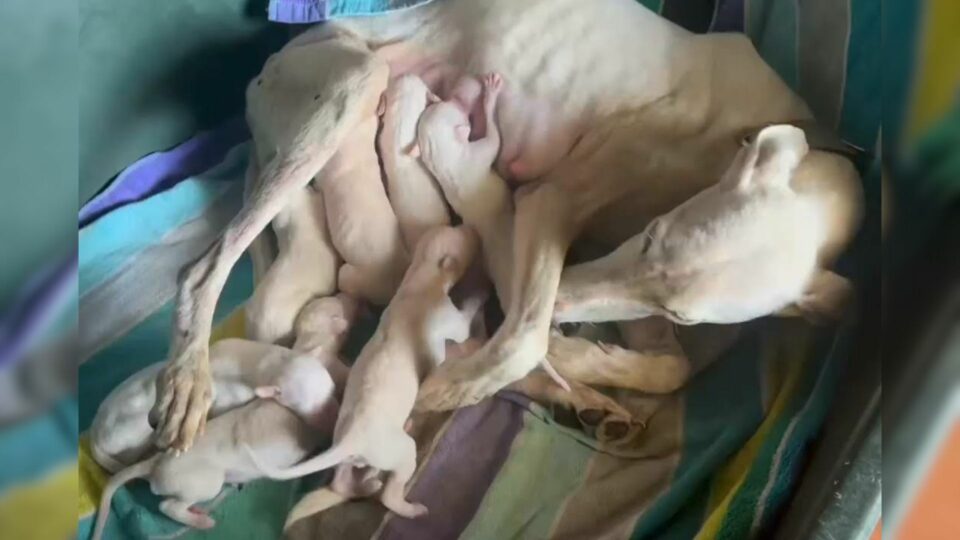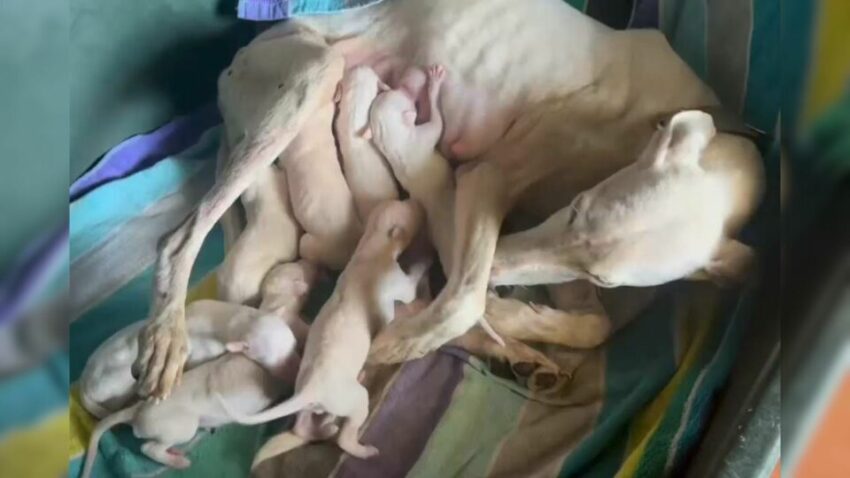There are times in the realm of animal rescue when the terrible circumstances that helpless creatures must endure present significant difficulties. This was the case with a young puppy who was in a really bad condition where there didn’t seem to be much hope and he had a lot of obstacles to overcome. His predicament’s circumstances provide a clear image of the difficulties that many animals encounter, emphasising the gravity of the issue and the pressing need for help and understanding.
The puppy’s circumstances were characterised by a mix of basic carelessness, neglect, and exposure. It was clear from away that he had experienced a tough upbringing. It’s possible that he was found wandering by himself, cut off from his mother and siblings, or that he had been left behind in a hostile location with no supplies of food, drink, or shelter. Though the details of his predicament were not always evident, the outward manifestations of his anguish poignantly depicted a life in danger.

The seriousness of the situation became clearer as rescuers arrived on the scene. The puppy was a living example of the terrible effects of abandonment and abuse, with his skinny, emaciated body and ill health. His once-vibrant eyes, which showed the emotional toll of his experiences, were obscured with fear and doubt. It was obvious that he was physically and emotionally scarred, and that he needed help right away in order to be taken care of and given a road to recovery.
Animal welfare organisations and rescuers play a critical role during these times of crises. In addition to tending to the animal’s urgent requirements, their job is to start a thorough recovery plan. The rescue crew moved swiftly to stabilise the puppy’s health and give him the necessary food and medical attention. The first measures involved tending to any wounds or infections, taking care of any malnourishment problems, and providing a secure and consoling atmosphere in which he could start the healing process.

The path from a dangerous circumstance to a place of safety and care is intricate and multidimensional. It entails treating not just the physical but also the mental stress that frequently follows such encounters. This puppy’s recuperation was a slow process that needed his carers to be persistent and patient. Rebuilding trust, regaining health, and offering the love and support required for a complete recovery were the goals of each step.
This puppy’s difficulties are indicative of more general problems with animal welfare. Unfortunately, cases of neglect and abandonment are not uncommon, and successful solutions frequently call for a large investment of time and money. Foster families, rescue groups, and shelters all play a crucial role in offering the assistance required to improve such hopeless circumstances. Their efforts extend beyond providing animals with short-term treatment; they concentrate on long-term solutions, such as finding permanent homes and making sure animals get the continuous care and attention they require.

This specific puppy’s path from a dire circumstance to a bright future required a combination of medical care, consoling, and committed attention. The puppy’s resiliency and the kindness and dedication of those who assisted in his rescue were crucial in improving his situation. The account of his rehabilitation is proof of the power of teamwork and the enormous influence that empathy and intervention can have.
The puppy had an amazing metamorphosis as he started to heal. The formerly weak and timid animal began to improve, putting on weight and exhibiting a fresh lease on life. In addition to physical treatment, he also experienced emotional healing as he grew to trust and connect with his carers. Witnessing his triumphant return to health and happiness served as a poignant reminder of the tenacity of animals and the impact that committed care can have.

In conclusion, the tale of this puppy who had to deal with a terrible circumstance serves as a reminder of the difficulties and successes involved in animal rescue and rehabilitation. It emphasises how crucial it is to provide animals in distress with prompt attention, loving care, and the sustained support they need to flourish. The change from a hopeless predicament to a bright future illustrates the wider effects of group efforts in animal welfare and serves as a reminder of the significant impact that commitment and empathy can have on the lives of animals in need.
